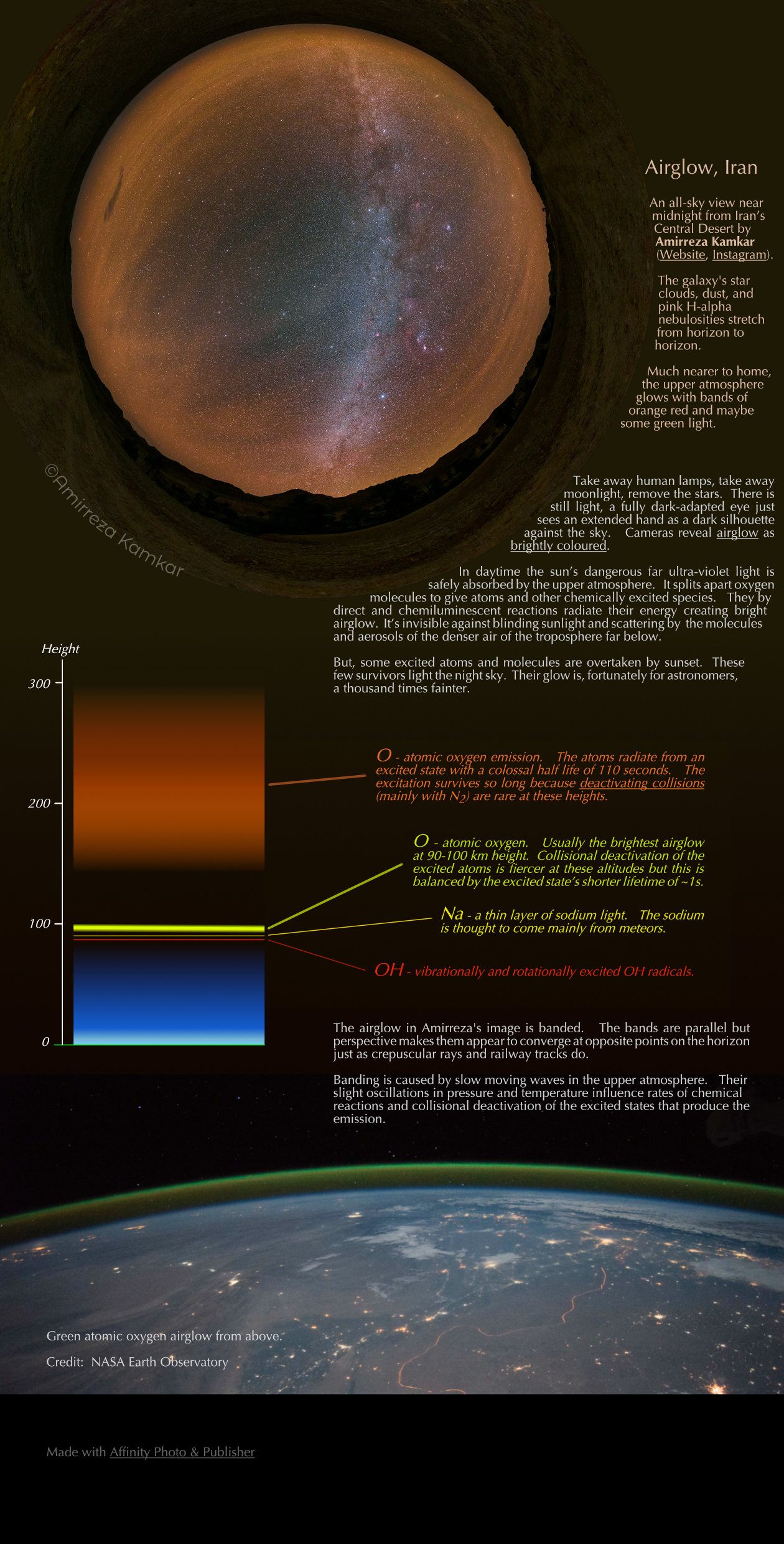Airglow over Iran
An all-sky view near midnight from Iran�s Central Desert by Amirreza Kamkar (Website, Instagram). ?The galaxy's star clouds, dust, and pink H-alpha nebulosities stretch from horizon to horizon. ?Much nearer to home, the upper atmosphere glows with bands of orange red and maybe some green light.?
Take away human lamps, take away moonlight, remove the stars. There is still light, a fully dark-adapted eye just sees an extended hand as a dark silhouette against the sky. Cameras reveal airglow as brightly coloured.?In daytime the sun�s dangerous far ultra-violet light is safely absorbed by the upper atmosphere. It splits apart oxygen molecules to give atoms and other chemically excited species. They by direct and chemiluminescent reactions radiate their energy creating bright airglow. It�s invisible against blinding sunlight and scattering by the molecules and aerosols of the denser air of the troposphere far below. ?But, some excited atoms and molecules are overtaken by sunset. These few survivors light the night sky. Their glow is, fortunately for astronomers, a thousand times fainter.
The airglow in Amirreza's image is banded. The bands are parallel but perspective makes them appear to converge at opposite points on the horizon just as crepuscular rays and railway tracks do.?Banding is caused by slow moving waves in the upper atmosphere. Their slight oscillations in pressure and temperature influence rates of chemical reactions and collisional deactivation of the excited states that produce the emission.


toptics
A
Highlights


